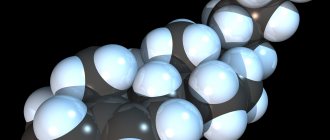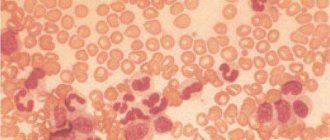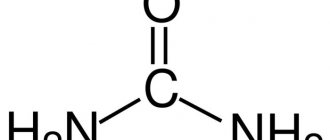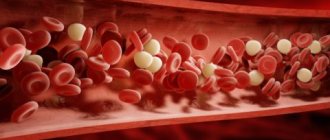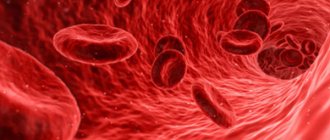Proteinuria is a condition in which protein is present in the urine. The phenomenon refers to the symptoms of a wide range of diseases. It is impossible to detect such an impurity in urine at home. To remove the compound from urine, it is necessary to act on the underlying pathology. The localization of the lesion can only be determined using laboratory, hardware and instrumental diagnostic methods. Without undergoing an examination, it is impossible to determine the cause of the deterioration. In 99% of cases, treatment is indicated for patients with a protein compound in their urine.
What is the norm
When the body is in good condition, the protein compound is not contained in the urine at all. But taking into account the patient’s possible intake of Aminoglycoside, Colistin or Acetazolamide, the acceptable concentration is considered to be up to 0.033 g/l per day. In pregnant women, this value is 0.14 g/l, as hormonal and other physiological changes occur in the body. Depending on the concentration of the protein compound in the urine, proteinuria is classified into 4 degrees.
Occurs:
- Microalbuminuria. Protein concentration – 30-300 mg/day
- Mild degree. The condition can be quickly corrected. Protein content varies from 300 mg to 1 g/day
- Average degree. The patient requires hospitalization. Protein concentration – 1-3 g/day
- Severe degree. The patient is being treated in the intensive care unit. The presence of protein compounds exceeds 3000 mg/day
To correctly determine protein levels, you need to correctly submit your urine for testing. Morning urine is suitable for analysis, which should be collected in a clean, dry container immediately after hygiene measures. To compare protein levels, the doctor may order an analysis of the daily volume of urine - in this case, it will have to be collected over a 24-hour period.
Choose a specialist, read reviews and make an appointment with a therapist online
Rules
Patients should know if they are prescribed protein determination by urine test that this is the pro column on the results form. To make the study as informative as possible, experts recommend using a daily dose of biological material. Anyone with a history of kidney dysfunction is advised to test their urine for total protein.
The collection of biological material must be carried out throughout the day, starting from eight in the morning of the current day and ending at 8 o’clock the next day. However, it is important to remember that the first portion of urine that is excreted from the body after a night's sleep should be flushed down the toilet. The biological material itself should be stored in a cool place where sunlight does not penetrate, and it must also be tightly closed.
In some situations, a single portion of urine can be used, preferably in the morning. If a urine test was performed and the protein is negative, what does this mean is of interest to many. This result indicates the absence of protein in the test sample, therefore, the person does not have kidney problems.
The patient must perform genital hygiene before collecting urine. This should be done without using soap or shower gel with additives. It is better if cosmetics are neutral, without a pronounced odor. It is also recommended to use warm water and not resort to douching.
If the result is positive, the leading specialist will determine why the urine test shows increased protein. The person must first notify him about the medications he is taking, since some of them may adversely affect the course of the study and require temporary withdrawal.
It is also worth saying that in some patients, a urine test shows an increased malb, which may be associated with excessive physical exertion or stress. Therefore, you should refrain from them for at least two days before the start of collecting biomaterial. This also applies to various types of intimacy.
Symptoms
As proteinuria increases, the patient experiences the following symptoms:
- Twisting sensations in the joints of the arms and legs
- Increased blood pressure, difficult to correct
- Swelling in the arms, legs, face, and in severe pathologies, fluid accumulates inside the abdominal cavity
- Pale skin, dizziness, feeling of general weakness
- Cramps mainly at night
- Lack of appetite
- Chills, nausea
- Increased fatigue
- Unpleasant sensations in the lumbosacral back
Depending on the underlying cause that caused the urine to become saturated with protein, the patient may have an increase in body temperature. Additional symptoms are disturbances in sleep and brain activity, changes in the shade of urine - it becomes cloudy, containing characteristic flakes.
Increased protein in the urine of a child: signs and how to reduce it?
The causes of proteinuria in children are the same as in adults.
External signs of high protein in the urine in children may be as follows:
- general weakness;
- drowsiness;
- loss of appetite or complete refusal to eat;
- dizziness;
- nausea, sometimes with vomiting;
- fever;
- chills;
- increased sweating;
- joint and muscle pain.
Also added to the above symptoms is the clinical picture of the disease that caused proteinuria.
You can reduce protein in the urine only by eliminating the cause of its appearance. For example, with pyelonephritis or nephritis, the child is prescribed antibiotics, anti-inflammatory drugs, diet, bed rest and other therapeutic measures.
In cases where proteinuria occurs against the background of influenza or severe GRVI with high body temperature, children must be given antiviral and antipyretic drugs.
The well-known TV doctor Komarovsky believes that the appearance of a protein should not cause parents to panic. Newborn babies are prone to proteinuria, and this is considered normal, and infants often react with proteinuria to overfeeding. In addition, it is quite difficult for a small child to correctly collect urine, so protein in the urine may be detected erroneously.
If your child detects protein in a urine test, seek help from a pediatrician or nephrologist, who will prescribe treatment and, if necessary, refer you to related specialists, such as an infectious disease specialist, an endocrinologist, a surgeon and others.
Causes
Factors that cause proteinuria are previous poisonings, burns, progressive or recently resolved infectious and inflammatory processes in the body. Other reasons are allergies, hypothermia, exposure to stress, and a genetic predisposition to the development of diseases that cause urine to become saturated with protein. The phenomenon also occurs due to taking certain medications and compression of the kidneys by the growing uterus (during pregnancy). Rarely, saturation of urine with protein is a consequence of poor nutrition: if it is dominated by the consumption of raw eggs and dairy products.
Polycystic kidney disease
Multiple cysts inside a paired organ are a consequence of genetic predisposition, previous lower back injuries, and the negative influence of endogenous and exogenous factors. The patient’s health condition does not bother him for a long time. He learns about polycystic disease during an examination for another reason or when tumors are suppurating. Proteinuria is a consequence of inflammation of cysts, which is dangerous due to organ abscess. If the neoplasms fester (for example, when bacteria transfer to the parenchyma from another pathogenic focus), in addition to the saturation of urine with a protein compound:
- Body temperature rises significantly
- There is severe pain in the lower back
- Blood pressure levels decrease, which causes weakness, dizziness, and loss of appetite
- Increased sweat production
When cysts suppurate, the patient is indicated for surgical treatment, followed by antibiotic therapy.
Pyelonephritis
Damage to the renal pelvis, which occurs due to exposure to pathogenic microflora, often bacteria. Men and women are equally susceptible to the disease. The reasons for the development of pathology are hypothermia, the transfer of pathogens from neighboring foci of inflammation, and the use of potent medications.
Symptoms of pyelonephritis:
- Lower back pain
- Increased body temperature
- Weakness, lack of appetite, dizziness
- Increased urge to urinate
- Reduced blood pressure levels
- Pallor, sleep disturbance
When the patient voices the listed complaints, he is examined and prescribed a diagnostic test. It is on the basis of the results of the study that the presence of a high volume of protein is determined, which serves as an indication for immediate hospitalization. Treatment is antibiotic therapy, administration of vitamins and non-steroidal anti-inflammatory drugs, hormones. Also, for pyelonephritis, nutritional correction is indicated: exclusion of salty, spicy, sour, and alcoholic foods.
Glomerulonephritis
Inflammation of the glomerular apparatus of the kidneys is a consequence of exposure to conditions of high air humidity, genetic predisposition, and poisoning.
Signs of glomerulonephritis:
- Pain in the lower back when urinating, changing body position, or performing even a small amount of physical activity
- Light pink coloration of urine
- Increased body temperature
- Weakness, lethargy, dizziness, lack of appetite and other signs associated with intoxication of the body
The presence of protein in urine is an indicator of the progression of a severe inflammatory process inside the kidneys.
Glomerulonephritis is eliminated through antibiotic therapy, the use of hemostatic drugs, hormones, and vitamins. The disease also requires adherence to a diet, reduced consumption of salt and water. Glomerulonephritis is dangerous due to renal failure, in which the only treatment option is hemodialysis, and then organ transplantation.
Amyloidosis and renal tuberculosis
Amyloidosis is a pathological condition in which toxic compounds – amyloids – accumulate in the body. The exact reasons for the development of the disease have not been established, but according to the observations of doctors, the main factor is hereditary predisposition. Those at risk for pathology include malignant tumors and autoimmune processes (systemic lupus erythematosus, scleroderma, rheumatoid arthritis).
Symptoms of amyloidosis:
- Frequent urination
- Decreased sensation in the arms and legs
- Reduced blood pressure readings
- Swelling of the arms and legs
- Pale pink hue of urine
- Weight gain (including due to edema)
- Shortness of breath, chest pain
- Dizziness
In severe forms of amyloidosis, total intoxication of the body occurs, accumulation of large amounts of fluid inside the tissues. Kidney tuberculosis is a pathological process in which the structure of the organ is destroyed. The cause of the development of pathology is infection with mycobacteria entering the blood through the hematogenous route.
The main manifestations of renal tuberculosis are dull pain in the lower back, an increase in body temperature to low levels, the presence of blood in the urine, and discomfort when urinating. Protein in urine is not the only symptom detected during analysis in patients with the disease in question. In tuberculosis, urine additionally contains mycobacteria and red blood cells.
Hypertonic disease
A pathological condition in which the patient’s blood pressure often increases, which is facilitated by:
- Hereditary predisposition
- Abuse of alcohol, junk food, chaotic medication use
- Constant exposure to stress
- Frequent exposure to high temperatures
- Presence of obesity of 2 or more degrees
Hypertension is dangerous because of a crisis - a condition in which the level of blood pressure reaches unacceptably high limits. This leads to the development of a stroke. Protein in urine with hypertension indicates problems with blood clotting - the risk of clots increases. Blood clots can block the lumen of veins and arteries, block blood flow to organs, cause hypoxia, or break off.
Diabetes
One of the most severe endocrine diseases. The cause of development is hereditary predisposition, stress, alcoholism. Main manifestations of the disease:
- Long-term healing of even small wounds
- Thirst
- Increased sweating
- Increased daily diuresis
Proteinuria in diabetes mellitus indicates a significant imbalance of hormones in the blood and confirms the presence of pancreatic dysfunction. To maintain insulin levels in the body at normal levels and avoid the development of coma, you need to visit an endocrinologist.
Preeclampsia in pregnant women
Consequence of stress factors, hereditary predisposition, age over 40 years, taking medications. The presence of proteinuria during gestation is a sign that the child’s growth and development may be impaired. The reason is insufficient blood flow to the fetus, intoxication with compounds that accumulate in the blood due to the failure of the kidneys to filter.
A woman’s blood pressure levels rise to critical levels, a severe headache occurs, and convulsions appear. If there is a massive loss of protein during urination, albumin transfusion is indicated for all pregnant women. This action relates to replacement therapy, reduces the likelihood of fetal death, placental abruption, and premature birth.
Atherosclerosis of the renal arteries
A serious disease of the cardiovascular system, in which the arteries supplying the paired organ with blood are clogged with fatty deposits. Atherosclerotic plaques form gradually, this is accompanied by poor nutrition, staying near foci of toxic effects, and the heredity factor. Proteinuria indicates impaired renal function, which leads to necrosis of organ tissue due to insufficient blood supply. In case of aggravated atherosclerosis of the renal arteries, organ-preserving surgery is performed.
Cystitis
Inflammation of the bladder develops for several reasons, the main of which are:
- Hypothermia
- Introducing bacteria from other foci of inflammation (with vaginal candidiasis, colitis, pyelonephritis)
- Failure to comply with personal hygiene rules
- Recent medical and diagnostic procedures using non-sterile instruments
- Excessive activity during intimacy
- Allergy to latex condoms; intolerance to the fabric from which pads and tampons are made
- Unprotected sexual intercourse with a partner who does not maintain personal hygiene
- Suffered severe poisoning - food, drug or other type
In women, cystitis occurs more often than in men, which is associated with the anatomical features of the urinary canal. Proteinuria during inflammation of the bladder is a sign of extensive damage to the organ, an indicator of the risk of a possible transition of the pathological process to the kidneys. Symptoms of cystitis are pain and burning during urine discharge, a feeling of incomplete emptying of the bladder, spasms above the pubis, increased body temperature. Cystitis is eliminated with antibiotics, uroseptics, and non-steroidal anti-inflammatory drugs. Additionally, it is recommended to apply a heating pad to the suprapubic area, but provided there is no hematuria (when the urine is saturated with blood).
Urethritis
Inflammation of the urethra is a consequence of insufficient personal hygiene, hypothermia, wearing too tight underwear, allergies. Urethritis is manifested by proteinuria in a chronic course and a high probability of spread of the lesion to neighboring organs. Manifestations of the pathology are irritation during urination, a slight increase in body temperature, swelling of the urethra, redness of the tissues of the vulva. Treatment does not differ from the therapy used for the development of cystitis.
Prostatitis in men
Inflammation of the prostate gland is a consequence of factors such as hypothermia, physical inactivity, lack of constant sexual activity, and the presence of a sexually transmitted disease. Prostatitis also occurs with a genetic predisposition to the disease. Signs of prostate inflammation:
- Pain when urinating, pain inside the urethra
- Increased body temperature
- Urine discharge in a sluggish, intermittent stream
- Discomfort in the perineum when a man is in a sitting position
- The appearance of an unpleasant odor from urine, a change in color
- The need to tense the abdominal muscles to completely empty the bladder
Protein in urine in men suffering from prostatitis indicates extensive damage to organ tissue and the development of hormonal imbalance. If acute prostatitis is not eliminated in a timely manner, it becomes chronic. The disease can lead to the development of impotence and cause infertility. The inflammatory and infectious process of the prostate gland is treated with antibiotics, non-steroidal drugs, hormonal drugs, and vitamins. Additionally, prostate massage and a number of physiotherapeutic procedures are prescribed.
Inflammation of the ureters
The disease is promoted by hypothermia, the movement of pathogenic microflora from neighboring lesions, and prolonged inhibition of the urge to urinate. Also, inflammation of the ureters occurs due to poor personal hygiene, abuse of salty, sour and spicy foods.
The pathology is eliminated by using antibiotics, uroseptics (Furazolidone and its analogues), and multivitamin complexes. Additionally, adherence to a diet is indicated - refusal to eat salty, sour, spicy, smoked foods; exclusion of alcohol, fruit drinks, caffeine. Proteinuria during inflammation of the ureters is an indicator of the lack of proper treatment, a signal of the imminent transition of the pathological process to the kidneys and bladder.
In what cases is analysis prescribed?
Determination of Bence Jones protein in urine is carried out if there are symptoms:
- pain in the bones/behind the sternum in combination with shortness of breath, anemia;
- fatigue, persistent weakness;
- increased sweating;
- rapid loss of body weight to the point of exhaustion;
- persistent fever;
- tendency to bleeding (from the nose, gum area);
- causeless bruising;
- frequent colds, infectious diseases;
- repeated non-traumatic (spontaneous) bone fractures;
- headaches accompanied by blurred vision;
- joint damage;
- poor tolerance to cold with numbness in the hands and other parts of the body;
- attacks of fever with pain in the lower back and black urine.
Attention! You should be aware that Bence Jones protein can affect the level of total protein in the blood and urine. In many cases, it can be determined at an early stage of the disease - months and even years before the onset of severe symptoms.
Therefore, you need to pay attention to the results of laboratory tests:
- ↑ level of total blood protein.
- A sharp increase in ESR (erythrocyte sedimentation rate) to 80-90 mm/hour and ↑.
- The occurrence of persistent proteinuria.
Paraproteinemia can also be suspected based on the results of an X-ray examination if foci of bone tissue destruction are observed.
Possible complications
Proteins perform a wide range of functions in the body:
- adjust hormone levels
- balance the degree of blood clotting
- protect the body from attacks by pathogens of all types
- support tissue structure, preventing the degeneration of cells from physiological to malignant
Complications associated with increased protein compounds in the blood include hormonal imbalance, reduced immunity and predisposition to diseases, including cancer. Depending on the underlying cause of proteinuria, the patient may experience a kidney abscess, failure of this organ; in pregnant women – premature birth, placental abruption. If urine is oversaturated with protein compounds, fetal death may occur - the kidneys cannot cope with the filtration function and toxins accumulate in the blood.
Which doctor should I contact?
Initially, if your health worsens, you should visit a therapist: he will prescribe a basic examination. Taking into account the diagnostic results, the underlying pathology is established. This is how the profile of the doctor is determined, who will subsequently prescribe, monitor and adjust therapy. If protein is detected in the urine of pregnant women, a treatment plan is drawn up by the observing gynecologist. Proteinuria caused by diabetes mellitus is treated by an endocrinologist. If protein saturates the urine due to inflammation of the urogenital tract, you will need to consult a urologist. If there is a relationship between increased protein in urine and hypertension, contact a cardiologist.
Choose a specialist, read reviews and make an appointment with a therapist online
Indications
At its core, protein is a complex high-molecular structure. It takes an active part in the life processes of cells throughout the body. Protein in a urine test, if detected in large doses, indicates many pathologies and its presence in biological material is not considered normal.
Doctors consider the main indications for laboratory diagnostics to be:
- Part of the patient's standard preventive examination;
- The presence of pathologies of the urinary system;
- The need to assess the level of effectiveness of the treatment;
- Analysis of the dynamics of recovery or development of complications in renal failure;
- The likelihood of the presence of protein and red blood cells in the urine;
- Control study 7-14 days after suffering streptococcal disease.
A urine protein test can accurately indicate whether a patient has kidney disease or not. However, just by its presence, the doctor will not be able to make a final diagnosis. Therefore, after receiving the results of a urine test, in which a urine test showed that protein is elevated, a full medical examination will be required.
Diagnostics
To establish the root cause of urine saturation with protein, extensive diagnostics are prescribed. Basic methods:
- Clinical, biochemical blood test.
- Urinalysis - general, bacteriological, according to Zimnitsky, according to Nechiporenko.
- Ultrasound of the kidneys, bladder, ureters (depending on the organ whose usefulness the doctor has doubts about).
- MRI or CT. Complex radiation imaging methods provide information about the state of health when other types of diagnostics are less informative.
- X-ray examination (a general overview image allows you to assess the condition and location of the kidneys).
- Urethral smear to determine microflora.
- Urine examination for mycobacteria (if kidney tuberculosis is suspected).
Additional types of diagnostics depend on the characteristics of the clinical case. It is possible to prescribe a Doppler ultrasound, a blood test to determine its sugar level, and excretory urography.
How is globulin disorder treated?
The prescription of therapy depends directly on the disease.
To normalize globulin levels in the blood, it is necessary to clearly determine the initial disease
and eliminate it. After this, the level should normalize.
Only the attending physician can accurately determine the diagnosis, taking into account all influencing factors, and prescribe the most effective and correct medicine.
He will determine how to increase or decrease globulins in the blood, indicating the correct course of therapy.
Treatment
To eliminate protein from urine and stop the underlying disease that caused proteinuria, patients are prescribed:
- Corticosteroids. Hydrocortisone, Prednisolone or Dexamethasone prevent the development of inflammation and restore renal activity. Hormonal drugs are administered taking into account the patient’s weight and age.
- Antibacterial drugs. A specific type of antibiotic is prescribed only taking into account the identified causative agent of the underlying pathology that caused proteinuria.
- Non-steroidal drugs (NSAIDs). Drugs in this group relieve pain and eliminate the process of inflammation. General contraindications for the use of NSAIDs are the presence of gastritis, colitis, gastric or duodenal ulcers.
- Vitamins. Synthetic substitutes for biologically active substances help restore immunity and normalize blood circulation.
- Antihypertensive drugs. Allows you to normalize blood pressure, avoid the development of crisis and hemorrhagic stroke.
For kidney tuberculosis, medications are prescribed to prevent the organ tissue from shrinking. Copious bleeding during urination (for example, with glomerulonephritis) is an indication for the use of Dicinone, Calcium chloride, Sodium ethamsylate, Aminocaproic acid. In case of hypertensive crisis, the patient is prescribed the administration of Dibazol, Papaverine, Magnesium sulfate. These drugs help quickly normalize blood pressure levels.
What are the features of the AG coefficient?
In a healthy state of the body of children and adults, the ratio of these indicators should be one to two. That is, there should be twice as much albumin as globulin.
If the indicators change in one direction or another, health problems may progress.
High AG coefficients can be provoked by excessive production of globulins, weak synthesis of albumin, or its loss.
Pathological conditions of the kidneys lead to loss of albumin, as a result of which protein is excessively excreted from the body.
An increase in the coefficient may be provoked by the following factors:
- Genetic disorder;
- Leukemia (blood cancer);
- Hypothyroidism;
- Tumor formations in which the tumor synthesizes cortisol, which imitates greater activity in the adrenal glands;
- Excessive use of Cortisone;
- A large amount of protein consumed with food.
Prevention
To prevent the development of diseases that are characterized by saturation of urine with protein, it is necessary:
- Avoid hypothermia.
- During sports or professional activities, protect the body from possible injuries.
- Keep your distance from sources of toxic or radiation radiation.
- Do not use medications without a doctor's prescription.
- Control your diet and avoid the presence of unnatural products in it.
- Carry out hygiene measures carefully and regularly.
- Stop drinking alcohol and other bad habits.
Protein in the urine is a signal of a serious disorder in the body. It is possible that it has a hidden form, but this does not make the degree of negative impact on health less. To get rid of proteinuria, the underlying condition that caused this symptom is eliminated. Depending on the identified disease, the use of antibiotics, anti-tuberculosis drugs, and hormones is prescribed.
A slight increase in protein in the urine is acceptable during pregnancy. But, given the frequent development of preeclampsia in pregnant women, women with proteinuria are under increased control by gynecologists.
Rules for collecting urine for analysis
The reliability of the analysis results depends on compliance with the rules on the eve of its delivery:
- Do not take medications that affect protein levels (colistin, acetazolamide, lithium, oxacillin).
- Refrain from eating meat, cottage cheese, salt, sour, spicy, smoked foods.
- Avoid alcohol and diuretics 3 days before the test.
- Toilet the external urinary organs.
- Collect urine immediately after waking up according to this scheme: start in the toilet, continue into the jar, then back into the toilet.
- Avoid hypothermia and exercise on the eve of urine collection.

